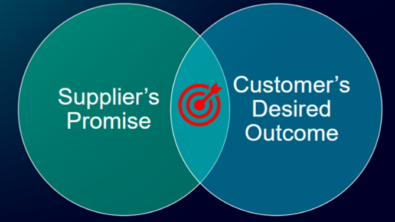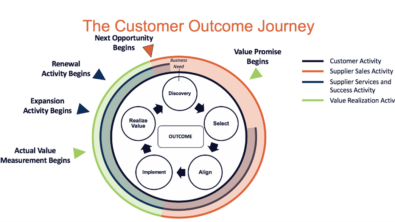Transformation to SaaS – Building a financial and operational strategy for transformation

In our first blog on partner SaaS transformation, we discussed the need for change and realistic ways to make it happen. In this installment, we will dive deep into the fundamentals of switching your business to the cloud/SaaS model.
Our industry is littered with failed attempts by software vendors and their partners to make this shift. More importantly, there are examples of how to do it successfully.
The ‘swallowing the fish’ model articulates the challenge of the transformation. Everyone associated with Siemens’ go-to-market strategy must appreciate how difficult this change can be for our partners. Hence, our urgent commitment to helping them get this right. Declining revenue and cash flow while simultaneously making the investments needed to build services and SaaS capabilities is a struggle for any business. But we are confident these are short-term challenges, and each company can find its path to a successful transformation.
Best practices learned from successful partner transitions
To be clear, there is no “magic” path that will help every partner through every situation. But any partner business willing to do the work can find its way. We’re not focused on philosophies or ideas, but on specific tactical actions a business can take to initiate and accelerate a successful transformation.
We developed our transformation best practices by learning from solution providers who have had successful outcomes. And while we will briefly describe those best practices here, what we really want is to start a conversation. And, for that, we need to hear from you.
- What additional information do you need to implement these practices?
- Have you seen these tactics work with your business in the past? What did you learn?
- What actions have we overlooked?
Remember, we’re all in this together. Siemens can only achieve its growth and SaaS transformation goals if our partners successfully transition their businesses.
Prepare for the natural implications of transforming to cloud/SaaS
As with all business planning, you must develop at least three years of financial and operational projections. On the one hand, subscription packages are typically on three-year contracts. On the other, it’s unreasonable to think any business – especially a small, specialized engineering software and services firm – will be able to overhaul its sales, services, operations and financials all at once.
Transformation takes time. You need to consider your resources and how the organizational change will impact each. Cash flow and margins are critical to sustaining your business. However, long-term success will be driven by strong customer retention and skilled employees committed to your successful transformation journey.
Expect the unexpected

Be ready to define and test several financial scenarios. Start with scenarios you consider reasonable and determine where you are prepared to execute. Next, visualize the extreme cases. These may present improbable outcomes but could illuminate the most significant potential risks of failure.
In each case, consider how fast you will go. Change that happens too quickly can exaggerate downstream complications, affecting cash flow and key personnel. An approach that is too conservative may result in missing out on opportunities to competitors. We suggest setting realistic but ambitious milestones and carefully tracking your progress. Stay agile so that when missteps occur or launch plans go awry, you can be ready to adapt. Because you’ve already tested several scenarios, you’ve removed much guesswork from adapting your plans.
Set a realistic vision that aligns with your risk tolerance and business ambitions
Transformation can be a big and loose concept. Such an initiative only succeeds when you define several factors in detail: your objectives, the work needed, and the metrics you’ll track to assess progress. The objective of “building a cloud/SaaS business” is too vague to yield reliable results or measurable progress. So, ask yourself: “What does success in cloud transformation look like?”
Don’t be constrained by how you managed change in the past. This new landscape is defined by different market conditions, technology solutions and business models. Think expansively about the detailed actions and outcomes you need to produce to accomplish your objectives. Most importantly, stay rooted within the boundaries of reality – your vision may be transformative, but you need to operate within the capacity of your people and budget.
You will also need to be transparent with your team at every step. Set expectations early, be clear about how you plan to bring them along and inform them of the new skills they will need to learn for future success.
Let customer needs drive your strategy
If the transformation to cloud/SaaS solutions were simply a vendor-driven initiative, your path forward would be much easier to define and manage. However, the core driver leading to cloud transformation is not vendor strategy. It is customer demand. Not only are customers rethinking the role of technology in every dimension of their business operations, but the way they buy software has evolved.
Partners need to adapt or risk losing relevance at this pivotal point when customers are most ready to adopt the software and services you deliver. In today’s buyer journey, customers have researched and decided solutions and vendors long before contacting a supplier. The choice is no longer based only on technical or functionality factors but on the solution’s impact on meeting their business goals. Be ready to map the cause-and-effect relationship between your solutions and the outcomes customers are actually paying for.
In a qualitative sense, your ability to provide high-value services becomes essential to customers’ results. Financially, high-margin services will help you build a more profitable business despite declining software margins in the highly competitive SaaS market. So, begin by learning what your customers need to accomplish. Then, connect their needs to your solutions and services to help them achieve those objectives. This approach must be at the heart of your transformation strategy.
How can we help?
These lessons we have learned can help you accelerate your transformation into a cloud/SaaS business positioned to thrive for years to come. We know each partner business will face unique challenges to implement these recommendations and may want further guidance. That is why we want to hear from you.
Transitioning to a cloud/SaaS business is not optional. Intense competition and other significant market drivers necessitate the change. And we will only succeed if you succeed. So, please share your thoughts, questions, insights, and expertise. And let’s build a better business together.
In our next blog, we will continue this journey to becoming fully SaaS solution providers by looking at how to build a sales and marketing engine that thrives in a SaaS world.
About the authors
Toni Reszka is Director of Global Partner enablement at Siemens Digital Industries Software. He has over 30 years of experience in partner business development and managing several major partners across international territories. He is currently leading Siemens’ XPE program, which helps partner businesses transform to XaaS.
Ryan Morris is Principal Consultant for Morris Management Partners. He has more than 25 years of experience in sales, marketing and management in the B2B technology solutions industry – specifically focused on building successful multi-tier channel solutions and profitable solution provider businesses.


